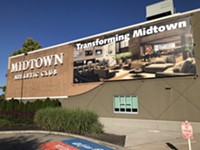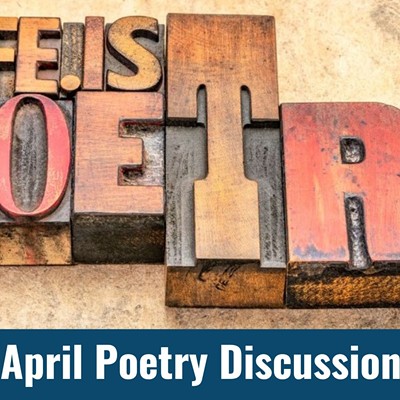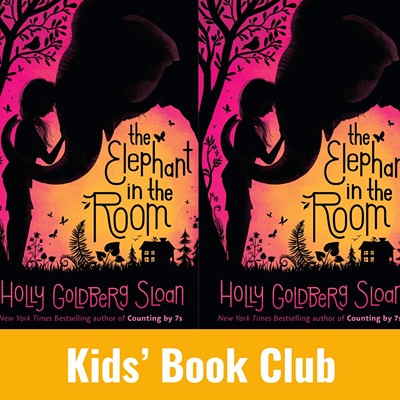[
{
"name": "500x250 Ad",
"insertPoint": "5",
"component": "15667920",
"parentWrapperClass": "",
"requiredCountToDisplay": "1"
}
]
There's no time like wartime for looking at the equation between the arts and society.
If you read the equation one way, it says art is our social critic and conscience. The other way around, the equation says society must conscientiously support the arts so our humanity, sensitivity, and generosity can stay alive.
But when war looms, all equations are off. The death cult prospers. And artists are up against one wall or another.
Many of them deal just fine. Look at actor Sean Penn, who recently visited Iraq to form a human connection with the people George Bush hankers to bomb.
More often, though, the artists who speak out are less well-known people working on their own turf.
Last week, for example, a group of local performing artists staged a "Spirit of Peace" event at the First Unitarian Church. The event included dance, music, comedy, drama, and combinations of these.
Sure, it's easy to say this was preaching to the choir. Like a few other local religious groups, the Unitarians so regularly (and admirably) support peace that there's a risk of "ghetto-ization." But to turn that equation around: Why do so few congregations actively resist war and promote peace? Anyway, it's about synergy. All efforts merge into a kind of wave-action that gets people thinking, and possibly more willing to do something on their own.
Liz Hallmark, a performer-teacher who directs Hallmark Danceworks and helped organize Spirit of Peace, says an artists' anti-war movement "is percolating up." She describes her own evolution: "Back in November," she says, "I got pissed off at what Bush is doing. I began to start imaging ideas for an anti-war piece. I put out a call to the general community." She says she's been contacting local congregations to host performances of a new piece. "I'm calling it Breach," she says. "There's a kind of Zeitgeist about this."
Another Spirit of Peace collaborator, Vicki Duval, helped roll out a classic, maybe the classic anti-war play, Aristophanes' Lysistrata for a March 3 performance at the Jewish Community Center. The plot hits militarism where it hurts: Women on both sides of a war conspire to withhold sex until their men make peace. Duval's work was not in isolation. SUNY Brockport women's and anti-war groups staged the play that same night. It was all part of the international Lysistrata Project (www.LysistrataProject.com), which covered more than 40 countries and hundreds of productions. But Duval, a BOCES arts-education coordinator, makes modest claims. "The arts," she says, "are a way for us to document our times, to try to organize chaos in a way we can look at it and not be overwhelmed by it."
In the same vein, the mass media recently were filled with something they usually won't touch on a dare: contemporary poetry. Politics was the real story, though. When First Reader Laura Bush sought literary lights for a White House symposium, poets everywhere seized a teachable moment. Led by Copper Canyon Press editor Sam Hamill, they formed Poets Against the War (www.poetsagainstthewar.org), whose online archive had more than 10,000 contributions at last count.
The national project spawned local Poets for Peace readings, etc., all over the map. Here in Rochester, SUNY Brockport English prof Ralph Black led an afternoon reading at the Central Library downtown. The readings included original work, snippets from the canon, and off-the cuff volleys at US foreign policy. (Proud disclosure: I read an anti-war poem of my own. The rest of the time, I sat there in total objectivity.)
Yes, the arts and artists do respond when society runs amuck.
But it's just as clear that society --- through the public sector, the closest we've got to something that represents everyone --- usually fights back. Money is the weapon.
I'm not saying that government agencies today are hammering artists for opposing war against Iraq. That punishment will come later, with many an invitation unwritten, and worse. (In my nightmares, I already hear the distinguished senator from a Red State: My fellow Americans, why should the taxpayer support this unpatriotic filth?)
The arts are whacked every year. In fact, they've been underfunded practically since the day government money started making a difference. During the Great Depression, public funding helped unemployed artists keep body and soul together. But the old regime prevailed during the McCarthy Era purges. Since then, it's been axiomatic: Artists and arts groups are basically on their own, and those who get out of line are up the creek. So it's fair to anticipate that excursions into anti-war organizing will cost somebody eventually.
But regardless of history, how are the arts faring at the moment? Look at the local scene. Even after the Monroe County legislature softened the draconian cuts that County Executive Jack Doyle wanted to ram through last fall, the arts came out a loser. The Rochester Philharmonic, for example, got its annual allocation reduced from $330,000 in 2002 to $160,000 in 2003.
And the RPO is thankfully better off than some orchestras during this quadruple-whammy time of recession, withering stock portfolios, permanent war, and promiscuous tax givebacks. Last fall, for example, the Tulsa Philharmonic ceased operations entirely. (Tulsa Phil officials blamed it on not just "tenuous financial conditions" but on the usual suspects, unionized musicians negotiating a new contract.)
"Yeah, it's a difficult time," says Sarah Lentini, executive director of the Arts and Cultural Council for Greater Rochester. "It's not easy to be a non-profit."
Lentini recalls the New York State Council on the Arts took a 10 percent hit two years ago, after climbing back from a 50 percent cut a decade before. "It's not that someone is out to do damage to the arts," she says. And she emphasizes that arts organizations really are foundations of local economies --- especially in a town like Rochester, with institutions like the Eastman School of Music and the George Eastman House.
I think someone or something is out to damage the arts. It's just that the damage is chronic and thus easily missed or mischaracterized. The mechanism is persistent underfunding by the public sector, causing artists and organizations to waste their precious energy begging. (Consider poor Public Broadcasting's endless pledge drives.)
The National Endowment for the Arts published a study comparing total government funding for the arts and museums in 11 advanced nations. As you'd guess, the US was dead last in per capita annual spending. But the gaps are amazing. In the mid-1990s, while our economy supposedly boomed, our government support came to $6 a head, versus $9 in much poorer Ireland, and a world below the $91 in Finland.
In 1995, US government arts support --- again, on the federal, state, and local levels combined --- totaled around $1.5 billion. How's that compared to what the Pentagon gets?
I get sick just thinking about it.
I know, there are more urgent priorities. Lots of people get sick thinking about the lack of universal health insurance, and get sick from the lack thereof.
But during this new Scoundrel Time, artists should be protesting their own impoverishment as a class, as well as fighting the war machine that robs their lifeblood.
Speaking of Arts
-
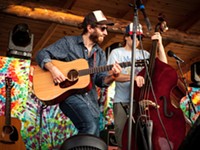
Live concerts return to Rochester — an overview
Jul 21, 2021 -

CITY Readers: Got art? It does a body good.
Nov 2, 2020 -
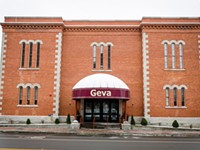
Lost theater season leads to Geva layoffs
Jul 30, 2020 - More »
Latest in Columns
More by Jack Bradigan Spula
-
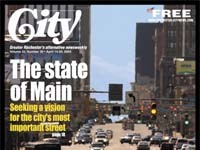
The state of Main
Apr 14, 2004 -
School improvement: the price is wrought
Apr 7, 2004 -
Hour of power
Mar 31, 2004 - More »


